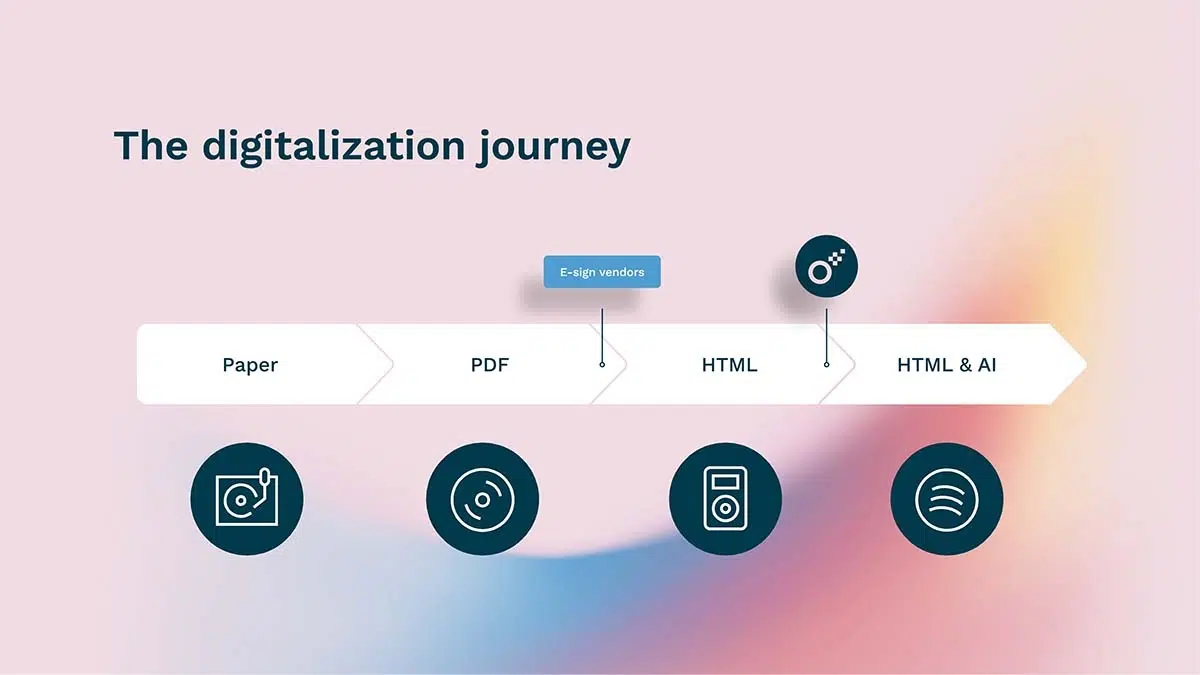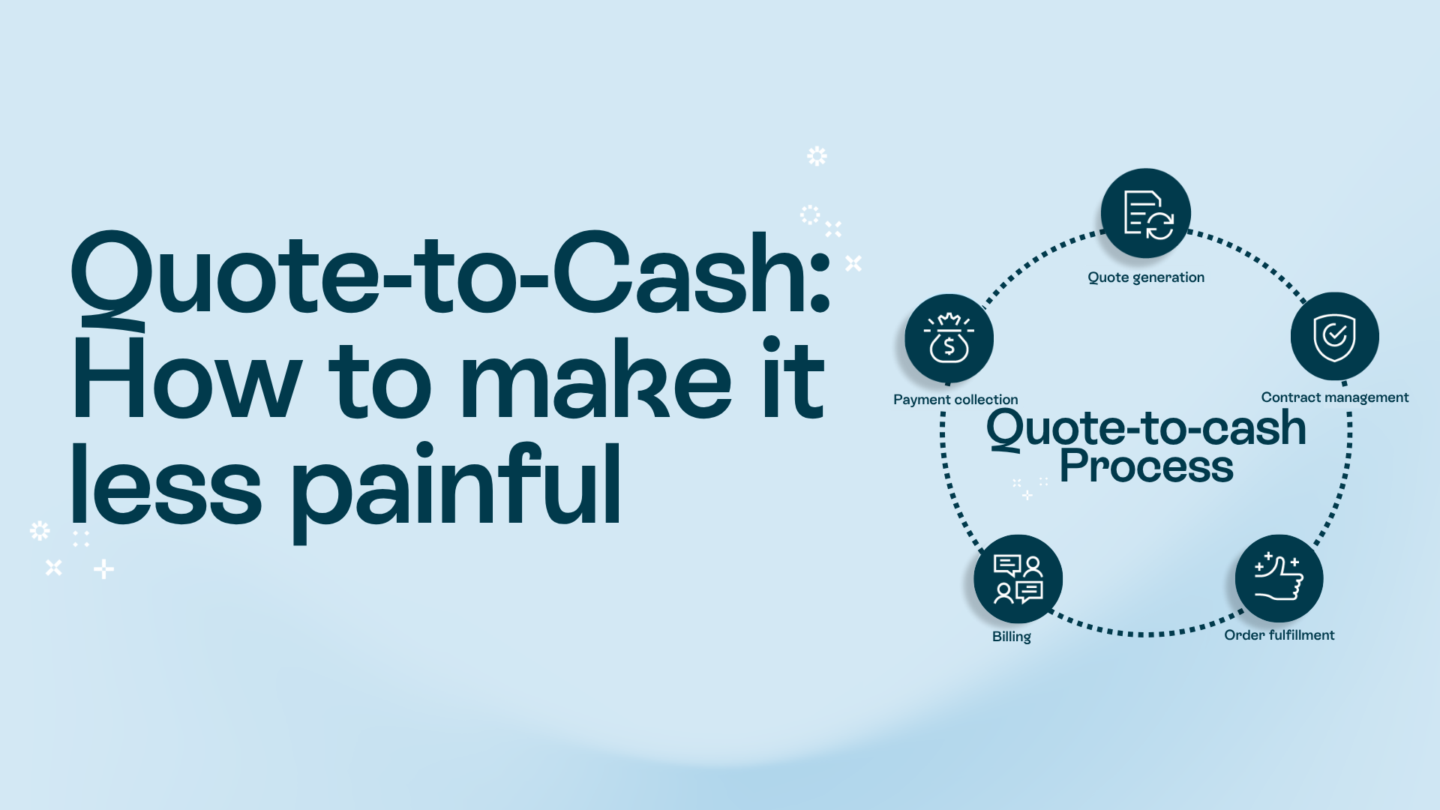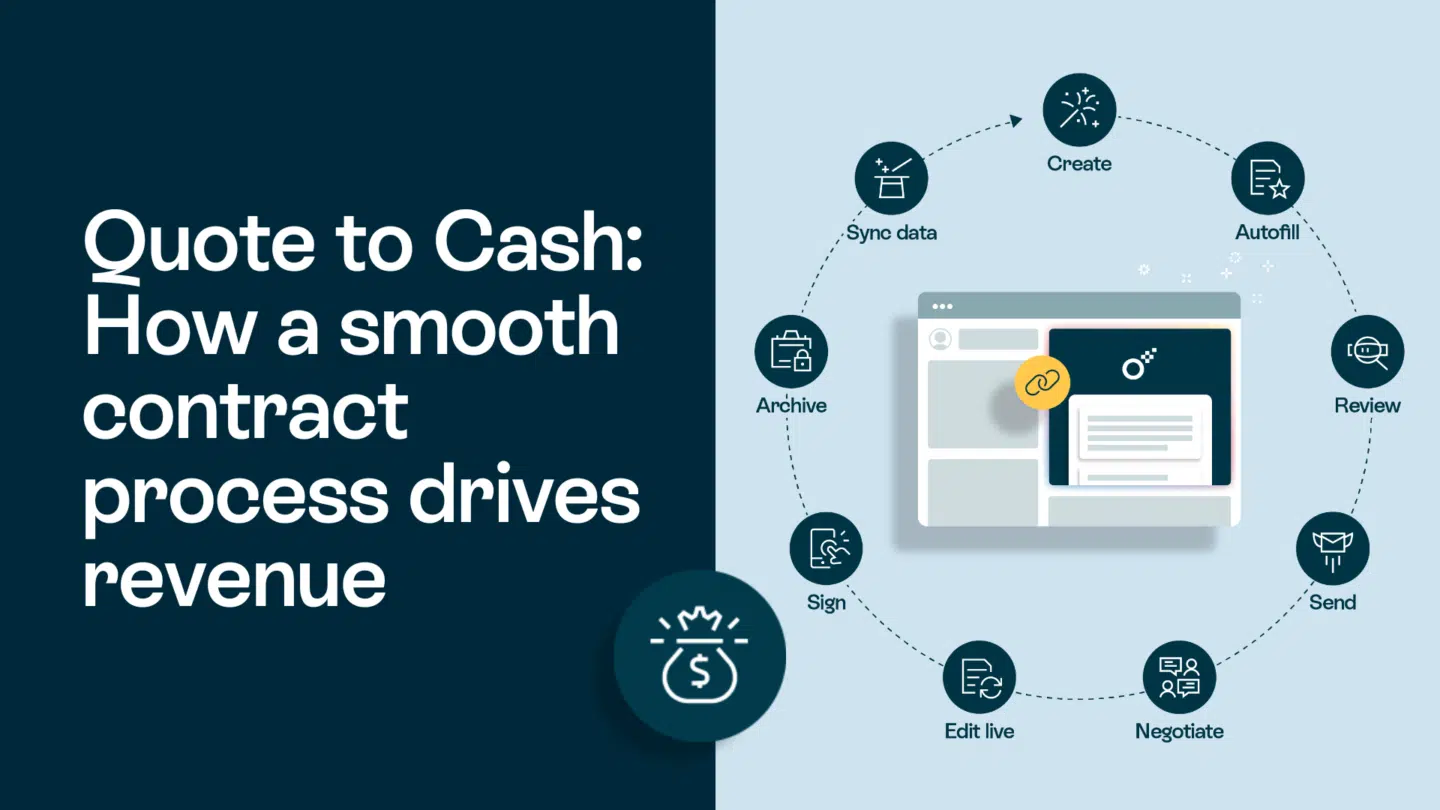Do you know the difference between digitalization and digitization? The latter is how most of us work today. You take your analog way of working and turn it into a digital copy. And that’s it. But to be truly digital is a different thing. It means you are data-driven and make use of the technology to the fullest. We’ll explain what we mean and walk you through the benefits and possibilities of using digitalized contracts. Which are smart and data-driven.
Digitalization is the buzzword of the century. It’s being thrown into each and every sentence in management meetings and business plans. But what does it really mean? Most of us probably think of it in broad terms, like replacing banks with online banking and the hand-written signature with an e-signature. To turn the analog into a digital shape. But this is merely digitizing, something most people are unaware of.
From analog to data-driven
Take the development of how we listen to music as an example. The first step of digitalization happened when the music on the analog vinyl record was converted into digital information and transferred onto a CD — it got digitized. The CD had more capacity and was much easier to mass-produce, but the thought behind it was still the same. Today, music has become digitalized, which has changed the way we consume music altogether. You’ve got access to the entire music library of the world from your phone and you get recommendations based on your listening habits. Additionally, we now have music visualizers that create captivating visual representations synchronized with the music. We’ve reached the data-driven era.

Digital contracts vs PDF
A PDF is like the CD of contracts. Sure, the information is in digital form but it doesn’t take you all the way. The PDF doesn’t let you be data-driven and you’re still very limited to a static workflow. It’s a dead document, a digital replica of a stack of paper. And putting an e-signature on your PDF doesn’t give you any digitalization points, unfortunately. In short, it’s taking an analog way of working and turning it into digital.

On the other hand, with HTML-based digital contracts you get a truly digitalized workflow. And lots of benefits:
- Scalability and more growth potential in your organization
- Frictionless process from template to archive
- Contract data can be used to work smarter, like lifecycle events
- No manual steps mean minimized margins of errors
- Risks associated with data retention and management disappear with permission control
But don’t forget, data can only take us so far. It’s up to us to actually do something with it.
Make your entire organization data-driven
In Oneflow, you can easily digitalize the contract flow in your entire organization. You can manage all types of documents that need a legally binding signature in the same account. It’s totally up to you and your organization how you want to structure your account, but for example, you can create workspaces based on department, region, or company. With permission controls, there’s no risk of a sales rep getting access to an HR contract and vice versa. And to get even more flow in your work, you can connect your workspaces with other systems. If you for example want to initiate the contract process from your CRM, you can connect it with your workspace for sales. Just like that!

Visit our Help Center if you’d like to learn more about how to work smart with workspaces.









